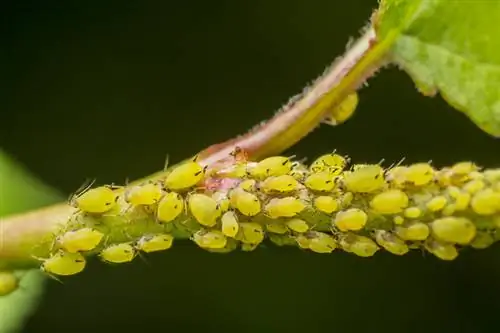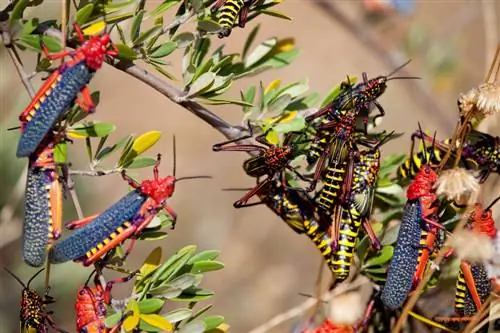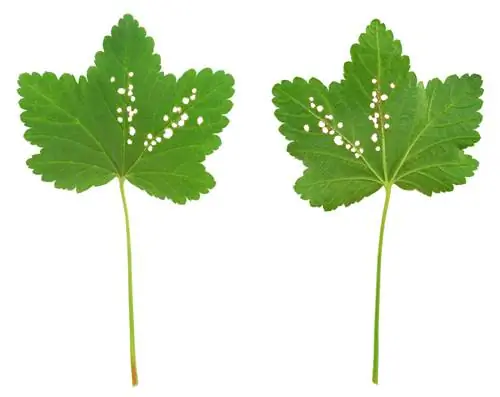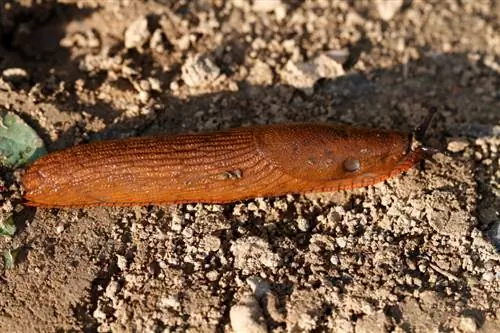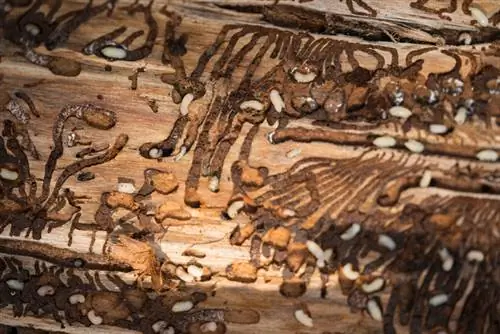- Author admin [email protected].
- Public 2023-12-16 16:46.
- Last modified 2025-01-23 11:22.
Brussels sprouts are one of the cruciferous vegetables that are susceptible to some pests. Since these spread on different plants from this family, crop rotation is of great importance. In the event of a pest infestation, you need to act quickly.
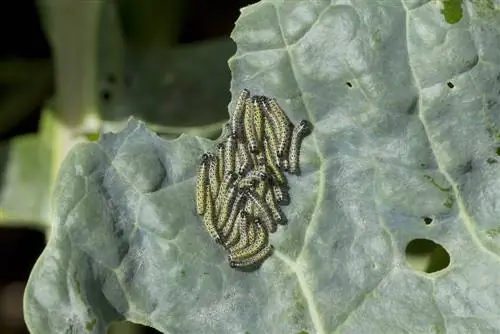
What pests attack Brussels sprouts and how can you combat them?
Common pests of Brussels sprouts are the cabbage scale insect, the cabbage white butterfly and the cabbage heart midge. Preventive measures include the use of vegetable protection nets, cabbage collars, rock dust and regular hoeing, as well as the cultivation of companion plants such as celery and tomatoes.
cabbage moth scale insect
The pest, also known as whitefly on cabbage, lays its eggs directly at the base of young plants so that the scale insect-like larvae can feed on the roots. If the summer months are particularly warm, mass reproduction occurs.
Whitefly damage
Both maggots and flies suck the sugar-rich plant sap from the ducts. They excrete the substances they do not need as honeydew, which forms a sticky coating on the leaves. Sooty mold fungi find an ideal breeding ground on the secretions, so that blackish lawns spread over time.
What you can do:
- Cover culture with vegetable protection nets (€15.00 on Amazon)
- Place a cabbage collar made of plastic or cardboard around the root collar
- Sprinkle rock dust at the base of the plant
- Dig up and dispose of infected Brussels sprouts
cabbage white butterfly
If you spot these brightly colored butterflies in your garden, you should check the plants for eggs. If you find individually placed eggs on the undersides of the leaves, the small cabbage white butterfly was at work. From these, velvety caterpillars hatch with a light green color and yellowish stripes, which later eat into the heart of the cabbage plant.
Its relative, the great cabbage white butterfly, places bright yellow egg packets containing ten to 20 specimens on the leaf veins. Typical identifying features of the caterpillars are the yellow-green basic tone and the black spots. With a length of 50 millimeters, the caterpillar pupates after a month.
How to proceed
Control measures must be carried out early. When feeding activity begins, the spread of pests can hardly be stopped and the harvest is at risk. Caterpillars of the lesser cabbage white butterfly are active from June onwards. The descendants of its less dangerous relative cause damage to crops from July to September. When you discover the butterfly eggs, brush them off with your finger and crush them between your thumb and forefinger.
Cabbage midge
It is an important pest in wet regions of the Alpine foothills. Females lay their glassy eggs at the base of plants or in the heart leaves. After a week, the yellowish larvae hatch and feed on the upper side of the leaf stems. This causes the lower area to continue to grow, resulting in twisted leaves. Other symptoms include heartlessness and the formation of numerous side shoots. Brussels sprouts are particularly at risk between May and June.
Prevent and combat
Spray the plants as a preventive measure with a soft soap broth during the peak flight season. Algae lime and rock dust prevent egg laying on the root neck and in the heart. Regular hoeing causes the pupae to dry out in the ground. Be sure to rotate crops and place celery and tomatoes between the Brussels sprouts.


